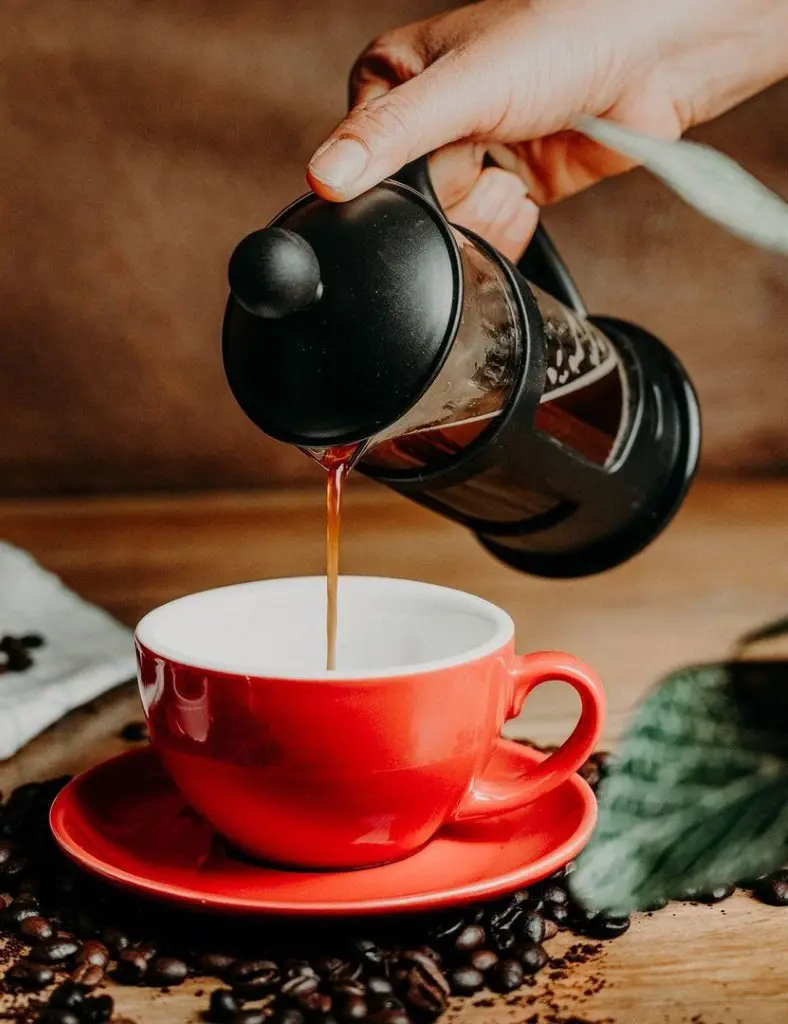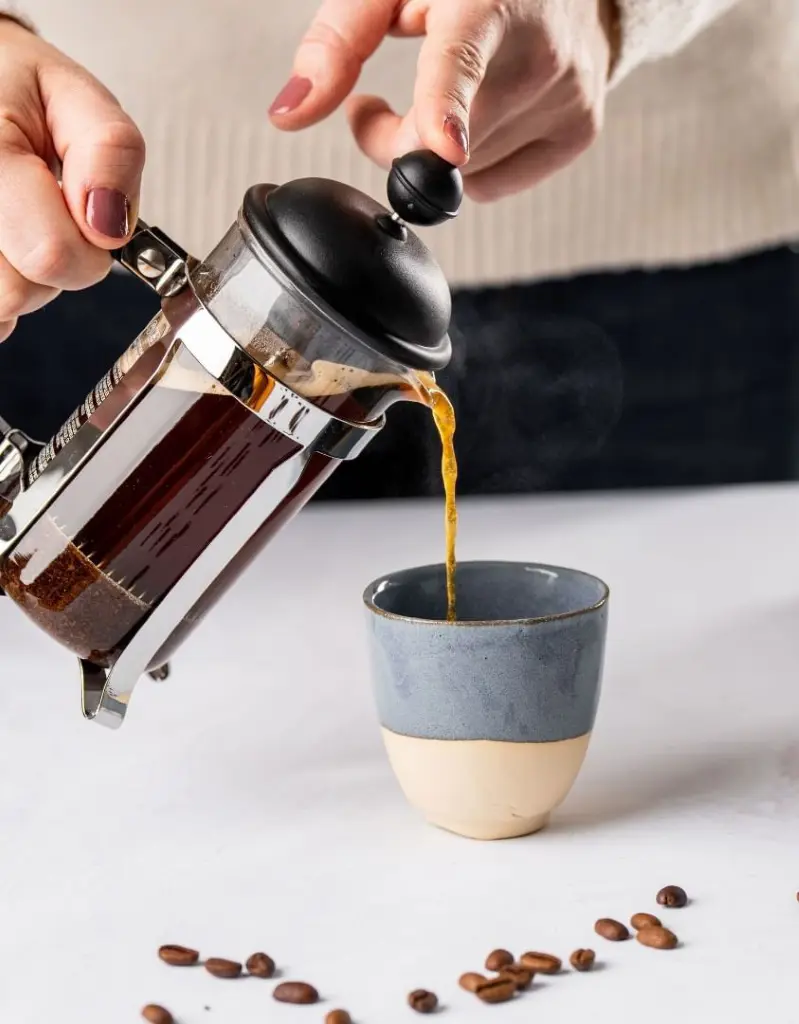How Does A French Press Work?
The French press reveals a straightforward coffee brewing technique that relies on water and ground coffee interacting perfectly. When hot water meets coffee grounds, it begins extracting rich flavors and essential oils.
The precise water temperature evaluates the quality of your brew – temperatures around 200°F ascertain a balanced result. If the water is too hot, the coffee becomes bitter and burnt. When it's too cool, the grounds won't release their full potential, leaving you with a weak and flat-tasting drink.
The procedure involves adding coarse coffee grounds to the carafe and pouring hot water over them. After a few minutes of steeping, a metal plunger with a fine mesh filter detaches the extracted coffee from the used grounds.
This method gives coffee lovers complete control over brewing, allowing them to create a perfect cup fitted to their taste.
Pros And Cons Of A French Press

The French press introduces a unique coffee brewing journey that goes beyond typical preparation methods. This brewing technique offers coffee lovers a chance to create a rich, personalized drink with straightforward steps.
Understanding its strengths and limitations helps you decide if this method fits your morning routine.
Pros:
- Coffee brewing becomes simple and direct with a French press. Anyone can learn this method quickly, creating a delicious drink without complex steps or specialized skills.
- Preparing coffee takes minimal time and effort. You can create a fresh batch of coffee in just a few minutes, making it perfect for busy mornings or quick refreshment.
- This method allows preparing multiple servings simultaneously. Unlike other brewing techniques that require individual preparation, the French press enables you to make enough coffee for several people with ease.
Cons:
- Selecting the right coffee grounds matters significantly. Standard pre-ground or espresso coffee won't work effectively. Coarse ground coffee ensures the best flavor and prevents unwanted sediment in your drink.
- The brewing process can create potential challenges with taste. Extended water contact with grounds might result in coffee that feels slightly bitter or too oily.
- Cleaning requires more attention compared to other brewing methods. The device needs thorough washing after each use to maintain its performance and prevent residue buildup.














